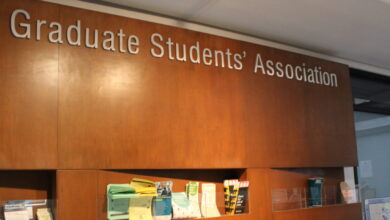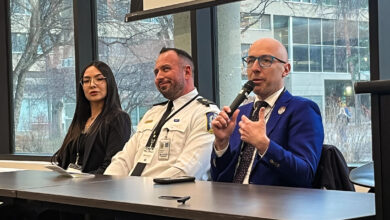East Asian Studies students petition university as potential merger looms
Students wrote a letter expressing their concerns about the loss of autonomy and identity that might result if the university were to merge them with another department
 Rachel Narvey
Rachel NarveyEast Asian Studies (EASIA) students have written a pro-active petition expressing their concern over a potential departmental merger during the University of Alberta’s ongoing academic restructuring.
The petition, circulated by the U of A’s East Asia Studies Undergraduate Students’ Association Kanpai Geonbae Konbae (KGK), on September 21, addressed the university, calling for it to retain EASIA as an independent department.
This is not the first time an EASIA merger has been discussed. Last year, the faculty of arts proposed a merger of EASIA and Modern Languages and Cultural Studies (MLCS).
Though the MLCS merger ended up being scrapped, the KGK is still wary of what could be on the horizon.
“EASIA cannot be simplified into another department,” petition reads
In addition to detailing concerns about potential loss of autonomy, funding, and identity, the petition also lists fellow universities McGill, University of Toronto, and the University of Calgary as having separate EASIA departments.
The letter acknowledges the major budget cuts the U of A is currently facing, while also emphasizing keeping EASIA independent is in line with the university’s commitment to equity, diversity, and inclusion.
The university released a plan on Monday, September 21 detailing three scenarios for academic restructuring focused on faculty rearrangement and consolidation.
According to the report, departmental restructuring — though in discussion — is off the table until decisions about faculty restructuring have been made.
EASIA students remain frustrated about last year’s proposed merger, say they weren’t consulted
Katie Lu, a third year business student and co-president of KGK, said that releasing this petition is a way of striking a dialogue with administration to ensure that EASIA’s requests are taken into consideration.
“It was really stressful last year when we thought that EASIA was going to be merged with the department of MLCS,” she said. “It just came out of nowhere and we weren’t consulted.”
Lu outlined the stakes for keeping EASIA’s departmental independence, including autonomy over internal governance, representation, what courses are offered, and who remains a faculty member.
For her, the most important aspect of EASIA’s departmental independence is the sense of identity it instills.
“As a person of East Asian heritage myself, having EASIA remain independent is a symbol for people like me,” said Lu. “It’s a place for us to learn and be able to express ourselves freely with our cultural identity, and for international students, a place that they can come and be welcome already.”
Needs can be met despite merger, says dean of arts, Steve Patten
Steve Patten, the dean of arts, said that while nothing is confirmed, if EASIA was merged with another department, the requests in their letter could still be met.
“There are ways for dealing with representation, identity, and control, regardless of the department you end up in,” he said. “We have to take that challenge seriously when we’re designing both departments and programs.”
He said that even as the faculty of arts undergoes restructuring, those involved with specific programs will be able to take the lead on shaping those programs and the courses they offer.
Additionally, Patten said it will be key to make sure all programs have strong profiles.
“We need to find ways — for example with religion or with EASIA — to make sure that our website and our communications and our recruitment really put the programs front and centre,” he said.
The council of department chairs will release a set of possibilities for departmental restructuring the week of October 5.
Patten sent out a letter to petition signers on September 25, outlining opportunities for consultation and input that will be made available in weeks to come.
“I hope you will all look out for opportunities to participate in consultations in the coming weeks,” Patten wrote in the letter.
While the faculty of arts can debate and release its own plan for restructuring, decisions will ultimately be made in collaboration with the Academic Restructuring Working Group (ARWG), which is spearheading restructuring for the entire university.
Promises of autonomy would “depend on implementation,” says Lu
Patten says regardless of departmental restructuring, the KGK will still be able to flourish.
“We’re committed to an EASIA student’s association,” he said. “We can commit to that regardless of what department they’re in, because the program will still exist, the students will still exist, and if they have enough enthusiasm, we can make it work.”
Still, he said that EASIA’s petition highlights considerations that must be made.
“If we don’t address those issues, then we’re not doing a good enough job with our restructuring,” he said.
For Lu, the uncertainty of a merger is still a concern for EASIA’s autonomy.
“It would depend on the implementation — what they really mean when they say autonomy. It could mean that you could have autonomy over course offerings, but you can’t have it over staff,” she said.
The KGK released their response to Dean’s letter in a post on their Facebook page published September 30.
Lu highlighted how the practice of merging EASIA into another department still holds additional implications.
“The other departments for the majority are studying Western and Euro-centric cultures, so if you just merge us together and honour some things but not other things, what does that mean for our identity?”




